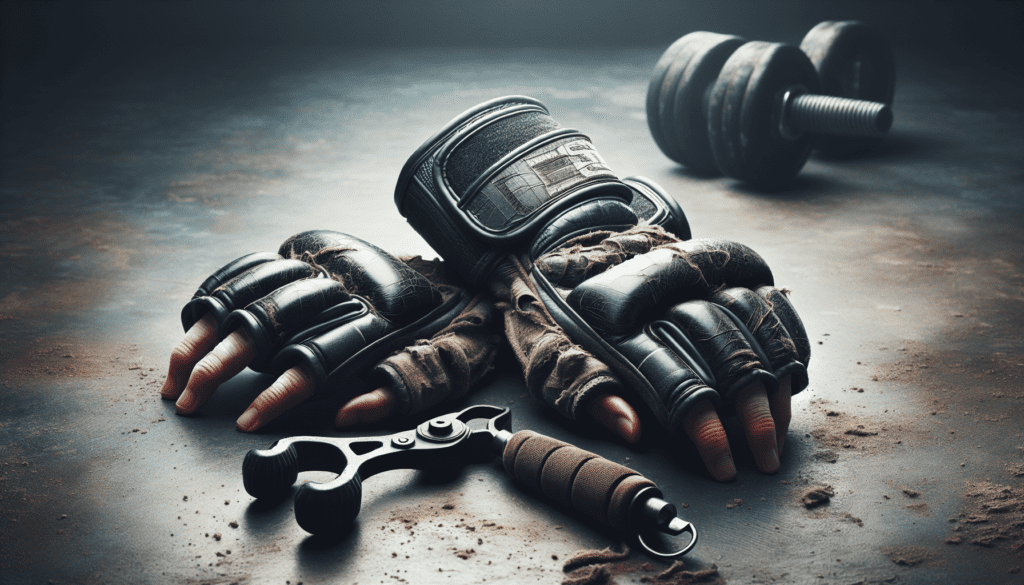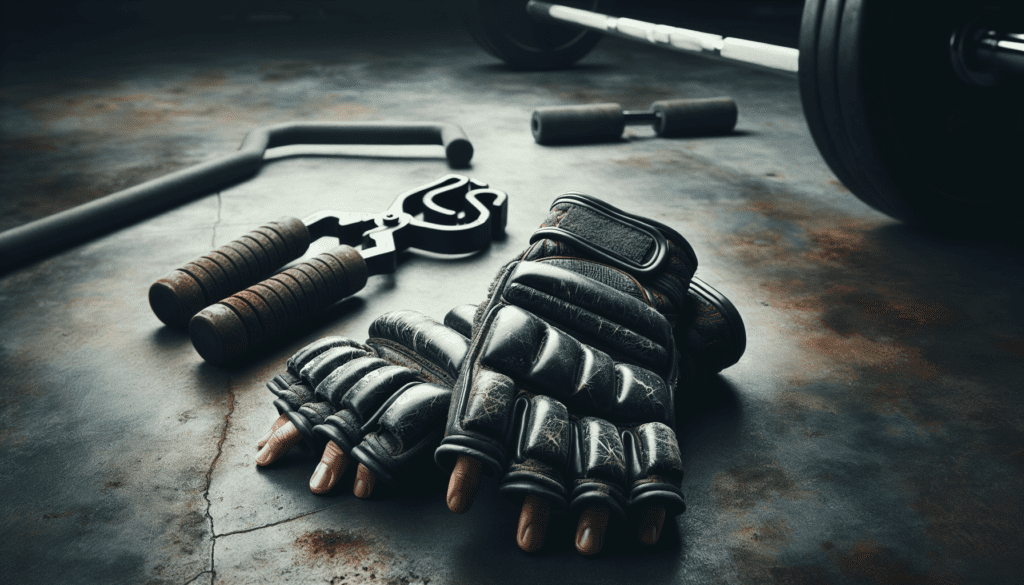Improving your grip strength can make a huge difference in your MMA training, giving you the edge you need during intense grappling sessions or when you’re clinching with an opponent. By incorporating targeted exercises like dead hangs, farmer’s carries, and wrist curls into your routine, you’ll not only enhance your overall performance but also reduce the risk of injuries. This added strength can translate into more powerful submissions and a firmer hold on your adversary, giving you greater control in the ring. So, let’s dive into specific techniques and a comprehensive training plan tailored to boost your grip strength and elevate your MMA skills to the next level. Have you ever wondered just how important grip strength is for mixed martial arts (MMA) training? If you’re serious about enhancing your performance in the cage, mastering this often-overlooked aspect of fitness is key. Whether you’re clinching, striking, or grappling, your grip strength plays an integral role in your success.
So grab a spot on your favorite chair and get comfortable, because we’re about to delve deep into why grip strength is crucial for MMA and how you can improve it.
What is Grip Strength?
First things first, let’s break it down. Grip strength is the force applied by the hand to pull on or suspend an object. It is often categorized into three types: crush grip, pinch grip, and support grip. Each of these types serves its own unique function in MMA.
Crush Grip
The crush grip is what most people think of when they hear grip strength. It involves the fingers and the palm working together to crush or squeeze something. Think about when you shake hands with someone – the power you exert is due to your crush grip.
Pinch Grip
The pinch grip, as the name suggests, involves squeezing something between your thumb and fingers. This type of grip is crucial for tasks like holding onto a kettlebell handle or the rim of a weight plate.
Support Grip
Support grip is the type of grip strength that allows you to hold onto something for an extended period. This comes into play during pull-ups or when holding a heavy bag. This grip strength is hugely important in grappling exchanges in MMA.
Understanding these different types of grip strength will help you tailor your training routine effectively to improve all aspects.
Why is Grip Strength Important in MMA?
So why is grip strength so important for MMA training? It’s simple: it enhances performance and reduces the risk of injury. Whether you’re throwing punches, defending takedowns, or attempting submissions, strong hands can make a huge difference.
Improved Striking Power
First off, let’s talk about striking. The hands are your primary weapons in any striking situation. Stronger grips mean stronger punches. Your hand muscles stabilize your wrist and transfer power more efficiently through your knuckles. This can lead to increased knockout power.
Better Grappling Control
In grappling, grip strength plays an essential role in controlling your opponent. Whether you’re locking up a choke, executing a takedown, or defending against an armbar, a strong grip can be the difference between success and failure.
Reducing Injury Risk
Lastly, having strong hands and wrists can help you avoid injuries. Impact forces get distributed better, reducing the strain on individual muscles and tendons. This is particularly crucial in a high-contact sport like MMA, where the risk of injury is ever-present.

Assessing Your Current Grip Strength
Before we jump into the exercises and routines, it’s a good idea to assess your current grip strength. This will give you a benchmark and help you track your progress. Here are a few ways you can measure it:
Dynamometer Test
A dynamometer is a tool designed to measure the force output of your grip. Typically, you’ll squeeze the device as hard as you can, and it will give you a reading in pounds or kilograms.
Dead Hang Test
The dead hang test requires you to hang from a pull-up bar for as long as possible. This tests your support grip strength and gives you a good idea of your overall hand endurance.
Farmer’s Walk
The Farmer’s Walk is another functional way to assess grip strength. Grab two heavy dumbbells or kettlebells and walk as far as you can. Measure the distance and weight to track improvement over time.
Grip-Specific Drills
You can also include specific drills like towel pull-ups or plate pinches to assess different types of grip strength. Keep a record of your performance to track your progress and make adjustments to your training regimen.
Exercises to Improve Grip Strength
Now that you know why grip strength is so crucial and have a sense of where you stand, let’s get into how you can improve it. Below are some targeted exercises broken down by the type of grip they focus on.
Crush Grip Exercises
Hand Grippers
Hand grippers are portable and effective for building crush grip strength. You can use them anywhere, making them perfect for busy schedules.
- Beginner: 3×15 reps
- Intermediate: 4×12 reps
- Advanced: 4×15 reps with heavier resistance
Finger Curls
Finger curls can be done with a barbell or dumbbells. These target the muscles in your forearms, fingers, and hands.
- Beginner: 3×15 reps with lighter weight
- Intermediate: 4×12 reps with moderate weight
- Advanced: 4×15 reps with heavier weight
Pinch Grip Exercises
Plate Pinches
Plate pinches are a fantastic way to focus on pinch grip strength. Simply pinching two weight plates together and holding them for time.
- Beginner: 3×15 seconds with lighter plates
- Intermediate: 4×12 seconds with heavier plates
- Advanced: 4×15 seconds with even heavier plates
Block Weights
Using block weights is another way to focus on your pinch grip. You can make these yourself or buy them.
- Beginner: 3×12 reps with lighter blocks
- Intermediate: 4×10 reps with heavier blocks
- Advanced: 4×12 reps with even heavier blocks
Support Grip Exercises
Dead Hangs
Dead hangs are an excellent way to build support grip strength. Simply hang from a pull-up bar and hold for as long as you can.
- Beginner: 3×30 seconds
- Intermediate: 4×45 seconds
- Advanced: 4×60 seconds
Farmer’s Walks
Farmer’s Walks are a phenomenal way to develop all-around grip strength. They target your support grip extensively.
- Beginner: 3×30 meters with lighter weights
- Intermediate: 4×50 meters with moderate weights
- Advanced: 4×70 meters with heavier weights
Rope Climbing
Rope climbing requires a lot of grip strength and is great for building both crush and support grip strength.
- Beginner: Start with a thicker rope and climb halfway up.
- Intermediate: Use a thinner rope and reach the top.
- Advanced: Add weight to your body and climb the thinner rope.

Integrating Grip Training into Your MMA Routine
You might be wondering how you can integrate these grip strength exercises into your existing MMA training routine. The key is balance and moderation. Here’s how to do it effectively.
Prioritize Recovery
Grip strength exercises can be quite taxing on your muscles and tendons. Always prioritize recovery and avoid overtraining. Using a grip strengthener on rest days or during cooldowns can be a good strategy.
Functional Training
Incorporate these exercises into your warm-ups and cool-downs. By doing so, you’ll not only improve grip strength but also warm up the muscles necessary for your MMA training.
Split Routine
If you’re following a strict MMA training schedule, consider a split routine. This could mean dedicating certain days of the week specifically to grip strength, apart from your regular training.
Circuit Training
Integrate grip strength exercises into your circuit training. This keeps the intensity high and allows you to work on multiple aspects of fitness simultaneously.
Common Mistakes and How to Avoid Them
Even though improving grip strength might seem straightforward, there are some common pitfalls that you should be aware of.
Overtraining
Grip muscles are smaller and can be more prone to fatigue and injury. Ensure that you’re not overdoing it, which can lead to setbacks rather than progress.
| Sign of Overtraining | Solution |
|---|---|
| Persistent Muscle Soreness | Allow more rest days |
| Lack of Progress | Reduce intensity |
| Increased Fatigue | Incorporate active recovery |
Poor Technique
Using improper technique can not only reduce the effectiveness of your exercises but also increase the risk of injury. Focus on maintaining good form throughout all your movements.
Ignoring Mobility
Grip strength exercises can sometimes reduce flexibility in the hands and wrists. Incorporate mobility exercises to ensure that your grip gains don’t limit your range of motion.
Tracking Progress
Keeping track of your progress is essential if you want to know whether your efforts are paying off. Here’s how to efficiently do it:
Regular Assessments
Perform regular strength assessments using tools like dynamometers or by timing your dead hang. Record these measurements to track trends over time.
Training Journals
Maintain a training journal to note down your workouts, weights used, and any subjective feelings about how the exercise felt. This provides qualitative data that can be just as valuable as quantitative measures.
Video Analysis
Record your exercises, particularly at the start and then periodically through your training. This allows you to see improvements in technique and form, which are often subtle but important.
Nutrition for Grip Strength
Believe it or not, your diet plays a significant role in your muscle development, including grip strength. Adequate protein intake supports muscle recovery and growth, while nutrients like magnesium and calcium are essential for muscle function.
Protein-Rich Foods
Include lean meats, fish, eggs, and plant-based proteins in your diet.
Hydration
Keep yourself well-hydrated to ensure optimal muscle function.
Supplements
Consider supplements like Omega-3 fatty acids and multivitamins, especially if you find it hard to get all necessary nutrients from food alone.
Conclusion
Improving grip strength for MMA training offers multiple benefits that go beyond just having a firmer handshake. An enhanced grip can improve your striking power, grappling control, and reduce injuries. Through targeted exercises and intelligent integration into your MMA training regimen, you’re on the path to becoming a more formidable fighter.
So, what are you waiting for? With the exercises and tips laid out in this comprehensive guide, you’re well-equipped to take your grip strength to the next level. Happy training, and remember – a good grip could be the difference between victory and defeat!

